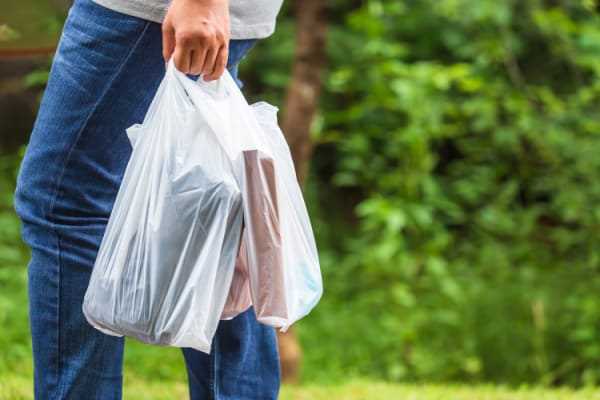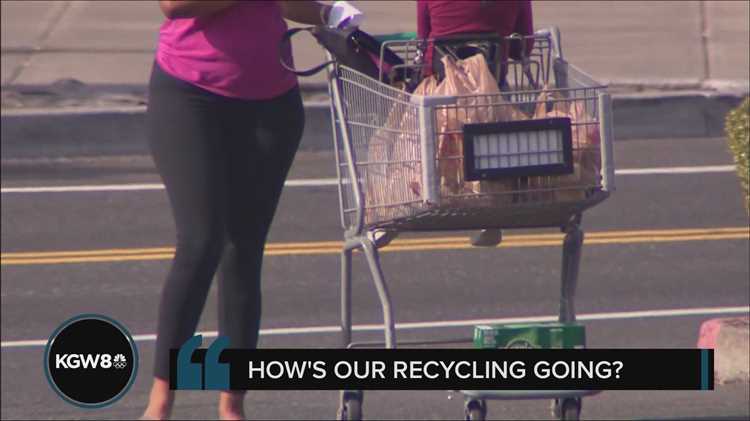In 2011, the state of Oregon implemented a 5 cent bag fee as a way to reduce the use of single-use plastic bags and encourage the use of reusable bags. This fee is charged to customers at retail stores for each paper or plastic bag provided at the checkout counter.
The distribution of this bag fee is an important aspect to understand, as it helps determine the effectiveness of this policy in achieving its goals. The revenue generated from the bag fee is used for various purposes, such as supporting waste reduction programs, promoting environmental education, and facilitating the transition to reusable bags.
One key factor in the distribution of the bag fee is the involvement of retailers. Retailers play a crucial role in implementing and collecting the bag fee from customers. They are responsible for ensuring that the fee is charged correctly and collected, and for accurately reporting and remitting the collected fees to the appropriate agencies.
Another aspect to consider is the impact of the bag fee on consumers. While the fee may seem small, its cumulative effect over time can be significant. Some consumers may choose to bring their own reusable bags to avoid paying the fee, while others may opt to pay the fee and continue using single-use bags. Understanding consumer behavior and attitudes towards the bag fee is important in evaluating its success and making any necessary adjustments to the policy.
In conclusion, understanding the distribution of Oregon’s 5 cent bag fee is crucial in assessing its effectiveness in reducing plastic bag usage. By examining the roles of retailers and the impact on consumers, policymakers can make informed decisions to improve waste reduction efforts and promote environmental sustainability.
- Overview of Oregon’s 5 Cent Bag Fee
- Purpose of the Bag Fee
- Understanding the Distribution
- How the Bag Fee is Collected
- Allocation of Funds
- Environmental Initiatives
- Administration and Enforcement
- Question-answer:
- What is the purpose of Oregon’s 5 cent bag fee?
- How are the funds collected from the bag fee used?
- Who is exempted from paying the bag fee in Oregon?
- Has Oregon’s 5 cent bag fee been effective in reducing plastic bag usage?
Overview of Oregon’s 5 Cent Bag Fee
Oregon implemented a 5 cent bag fee on single-use checkout bags in an effort to reduce plastic bag usage and promote environmental sustainability. The fee, which went into effect on October 1, 2011, applies to all retail establishments in the state, including grocery stores, convenience stores, and pharmacies.
The 5 cent bag fee is intended to encourage consumers to bring their own reusable bags when shopping. By placing a financial burden on single-use bags, it incentivizes individuals to make more eco-friendly choices and reduce their overall ecological footprint.
The revenue generated from the bag fee is used for various purposes, including promoting recycling and waste reduction programs, supporting environmental education initiatives, and funding local environmental conservation projects. The Oregon Department of Environmental Quality oversees the distribution and allocation of the collected fees.
Since the implementation of the 5 cent bag fee, there has been a significant decrease in the use of single-use bags in Oregon. This reduction has resulted in a positive impact on the environment, as fewer bags are being disposed of improperly and ending up in landfills or polluting natural habitats.
Overall, Oregon’s 5 cent bag fee has been successful in encouraging behavior change and fostering a more sustainable approach to shopping. It serves as a model for other states and countries looking to reduce plastic waste and promote environmental stewardship.
Purpose of the Bag Fee

The implementation of the 5 cent bag fee in Oregon serves multiple purposes aimed at promoting environmental sustainability and reducing plastic waste.
Firstly, the bag fee encourages consumers to bring reusable bags when shopping, thus reducing reliance on single-use plastic bags. By incentivizing the use of reusable bags, the bag fee helps to decrease the demand for plastic bags and the negative environmental impacts associated with their production, use, and disposal.
Furthermore, the bag fee acts as a deterrent for consumers to use single-use plastic bags, which often end up in landfills, littering the environment, or causing harm to wildlife. The fee provides a financial incentive for consumers to consider more sustainable options, such as reusable bags or alternatives like paper bags.
Additionally, the revenue generated from the bag fee can be used to fund environmental initiatives, waste management programs, and public education campaigns about the importance of reducing plastic waste. This creates a positive feedback loop where the bag fee helps fund initiatives that further reinforce the goal of reducing plastic bag usage.
Ultimately, the purpose of the bag fee is to encourage behavior change and raise awareness about the environmental impact of single-use plastic bags. By making consumers more conscious of their choices and incentivizing them to opt for more sustainable alternatives, the bag fee contributes to a greener and more eco-friendly Oregon.
Understanding the Distribution

The distribution of Oregon’s 5 cent bag fee is an important aspect to consider in order to fully understand its impact. The fee, which was implemented to reduce plastic waste and encourage the use of reusable bags, is collected by retailers at the point of sale. However, the way in which the collected fees are distributed varies.
Firstly, it’s important to note that not all retailers are required to charge the bag fee. This means that some businesses may choose to absorb the cost themselves, while others pass it on to their customers. Additionally, not all types of bags are subject to the fee. For example, paper bags made of at least 40% recycled material are exempt.
Once collected, the fees are used in different ways depending on the retailer. Some retailers keep the entire fee, while others may donate a portion or all of it to local environmental organizations. This allows retailers to support environmental initiatives and showcase their commitment to sustainable practices.
Furthermore, the collected fees can also be used for operational costs associated with implementing and managing the bag fee program. This includes administrative expenses, compliance monitoring, and public education campaigns aimed at promoting the use of reusable bags.
Overall, understanding the distribution of Oregon’s 5 cent bag fee involves considering the retailers’ choices, exemptions, and the various uses of the collected fees. This knowledge can help assess the effectiveness of the fee in reducing plastic waste and support the efforts of local environmental organizations.
How the Bag Fee is Collected
The bag fee in Oregon is collected at the point of sale when customers purchase single-use plastic and paper bags. The fee is added to the total cost of the purchase and is itemized on the receipt.
Stores are responsible for collecting the bag fee and remitting it to the Oregon Department of Environmental Quality on a quarterly basis. The department uses the funds collected from the bag fee to support recycling and waste reduction programs in the state.
When a customer chooses to bring their own reusable bags or declines a bag altogether, they are not charged the bag fee. This serves as an incentive for customers to adopt more sustainable habits and reduce their reliance on single-use bags.
The bag fee is not collected on certain types of bags, such as those used for bulk items, fresh produce, or prescription medications. However, stores have the option to charge a fee for these bags if they choose to do so.
Regular audits are conducted to ensure compliance with the bag fee program. Failure to collect and remit the bag fee can result in penalties and fines for non-compliant businesses.
Overall, the bag fee system in Oregon aims to encourage shoppers to use reusable bags and reduce plastic and paper bag waste. By making it financially advantageous for consumers to bring their own bags, the state hopes to promote a more sustainable and environmentally friendly shopping culture.
Allocation of Funds
The allocation of funds from Oregon’s 5 cent bag fee is an important aspect of the program. This fee is collected from customers who purchase retail bags at stores, and the revenue generated is used to support various environmental initiatives.
Environmental Initiatives
The funds collected from the bag fee are primarily allocated to support environmental initiatives. These initiatives aim to reduce the use of single-use plastic bags and encourage the use of reusable bags. The funds are used to implement educational campaigns, provide resources and incentives for consumers to switch to reusable bags, and support local waste reduction and recycling programs.
Administration and Enforcement

A portion of the funds is allocated to the administration and enforcement of the bag fee program. This includes the cost of implementing and maintaining the program, conducting audits to ensure compliance, and enforcing penalties for non-compliance. These activities are essential to ensure the effectiveness and integrity of the bag fee program.
| Allocation of Funds | Percentage |
|---|---|
| Environmental Initiatives | 80% |
| Administration and Enforcement | 20% |
The table above summarizes the allocation of funds from Oregon’s 5 cent bag fee program. The majority of funds, 80%, is dedicated to supporting environmental initiatives, while the remaining 20% is allocated to the administration and enforcement of the program.
Overall, the allocation of funds from the bag fee program is designed to promote sustainable practices, reduce plastic waste, and protect the environment in Oregon. By supporting environmental initiatives and ensuring the proper administration and enforcement of the program, Oregon aims to make a positive impact on its natural resources and promote a more sustainable future.
Question-answer:
What is the purpose of Oregon’s 5 cent bag fee?
Oregon’s 5 cent bag fee was implemented to reduce the use of single-use plastic bags and encourage shoppers to bring reusable bags to stores. It aims to reduce litter and protect the environment.
How are the funds collected from the bag fee used?
The funds collected from the bag fee go to different purposes. Some of the funds are used to cover the costs of administering the program, while others are distributed to small retailers to help them offset any additional expenses. Additionally, a portion of the funds may be used for environmental and conservation programs.
Who is exempted from paying the bag fee in Oregon?
There are certain exemptions to the bag fee in Oregon. Customers who participate in the federal Supplemental Nutrition Assistance Program (SNAP) or the Women, Infants, and Children (WIC) program are exempted from paying the bag fee. Additionally, the bag fee does not apply to restaurants, food banks, and certain other businesses.
Has Oregon’s 5 cent bag fee been effective in reducing plastic bag usage?
Yes, Oregon’s 5 cent bag fee has been effective in reducing the use of single-use plastic bags. Since its implementation, there has been a significant decrease in the distribution of plastic bags by retailers. This has resulted in a positive impact on the environment by reducing litter and the consumption of resources used in the production of plastic bags.